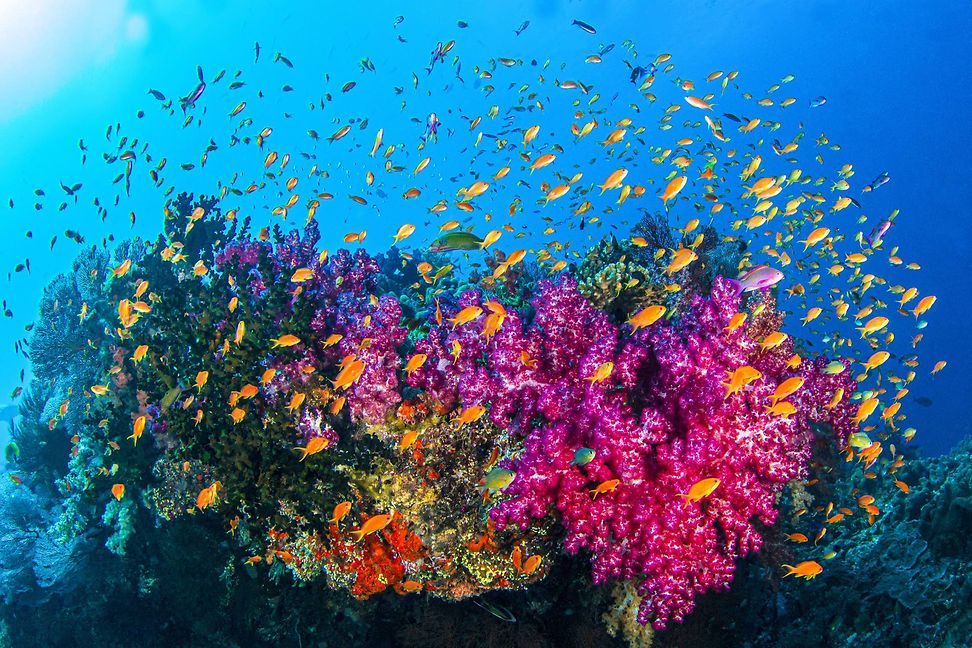在此处更改您的语言和 LGT 位置。
私人客戶的數碼平台
登錄 LGT SmartBanking
金融中介機構的數碼平台
登錄 LGT SmartBanking Pro
解答常見問題 (FAQ)
LGT SmartBanking 幫助
解答常見問題 (FAQ)
LGT SmartBanking Pro 幫助
The biological diversity on our planet is steadily declining, which has a severe impact on nature, the climate, and our lives. Increased efforts are required to introduce a turning point and to halt and reverse the loss of biodiversity. It is not only a matter of causing less damage but actively creating a basis for the preservation of as many endangered species as possible.

More than 30 percent - that is how many plant species are globally endangered today. These include the dandelion (Taraxacum germanicum), the water pygmyweed, and true mangroves. The main drivers of plant extinction are our human land use, soil pollution, and climate change. The most dramatic aspect here is the fact that even the most inconspicuous species never dies out on its own since its function is in the overall system of nature and hence influences the entire ecosystem. Slowly but surely, the situation will become extremely critical according to experts. The Intergovernmental Science-Policy Platform on Biodiversity and Ecosystem Services (IPBES) fears that one million animal and plant species could become extinct within the coming decades. If that were to happen, people are putting their own existence at risk because biodiversity is tremendously important for several reasons:

In recent years, climate change has become an omnipresent issue that preoccupies politics, society, and the economy. However, the loss of biodiversity has so far played a minor role in their discussions. Yet the issues are inextricably linked. By destroying biological ecosystems, the stored carbon dioxide is released into the atmosphere. Greenhouse gas emissions rise and add to global warming. Healthy, diverse ecosystems, however, can achieve the opposite by absorbing large amounts of carbon dioxide. For that reason, climate change has a direct impact on biodiversity. Rising temperatures, altered precipitation, and extreme weather events change or destroy entire ecosystems, leading to a decline in biodiversity. One vicious circle.
It is therefore all the more important not only to actively approach climate change but to advocate for the protection of biodiversity. We are still at the beginning, but there is a shift in people’s mindsets. More and more companies not only strive for net zero today (in terms of their greenhouse gas emissions) but in parallel also commit to the concept of Nature Positive. The main goal of Nature Positive is to actively improve the state of nature through human activities. This means not only causing less damage but actively contributing to the preservation and protection of nature. Such an approach enhances biological diversity, stores carbon, purifies water, and, additionally, even reduces the risk of a pandemic.
The fact that the issue is finally gaining momentum owes much to the United Nations Biodiversity Conference (COP15) in December 2022. The participating countries signed an agreement to stop the destruction of global ecosystems. The governments agreed to put at least 30 percent of the global land and marine areas under protection and conservation by 2030. In addition, they are planning to spend more money on the preservation of species. A particular challenge lies in the fact that the impact of human interaction with nature varies across locations. One issue that is devastating in one region can be unproblematic in another. Each ecosystem is absolutely unique, making it challenging to develop general applicable measurements and options for action.

The goal to stop the destruction of nature is even more urgent than climate protection to a certain extent. While the global warming we are causing is at least theoretically reversible by removing greenhouse gases from the atmosphere, extinct plants and animal species will be lost forever. Nature Positive is not a vision to be implemented in the future by the next generations. Rather, it is a tangible goal for the next decade. We must act now.
LGT is convinced that the financial world must make a significant contribution to the protection of global biodiversity. We take our responsibility seriously. With our sustainability strategy for 2030, we aim to integrate sustainability in all areas of the company and our entire product range. In 2022, we signed the Finance for Biodiversity Pledge and actively participate in the Finance for Biodiversity Foundation’s working groups to work together for positive change in the financial industry. also help our clients to understand the significance of this important issue and to contribute themselves through a sustainable focus of their portfolio.
Find out more about our sustainable products and commitment
Discover our digital Sustainability Report